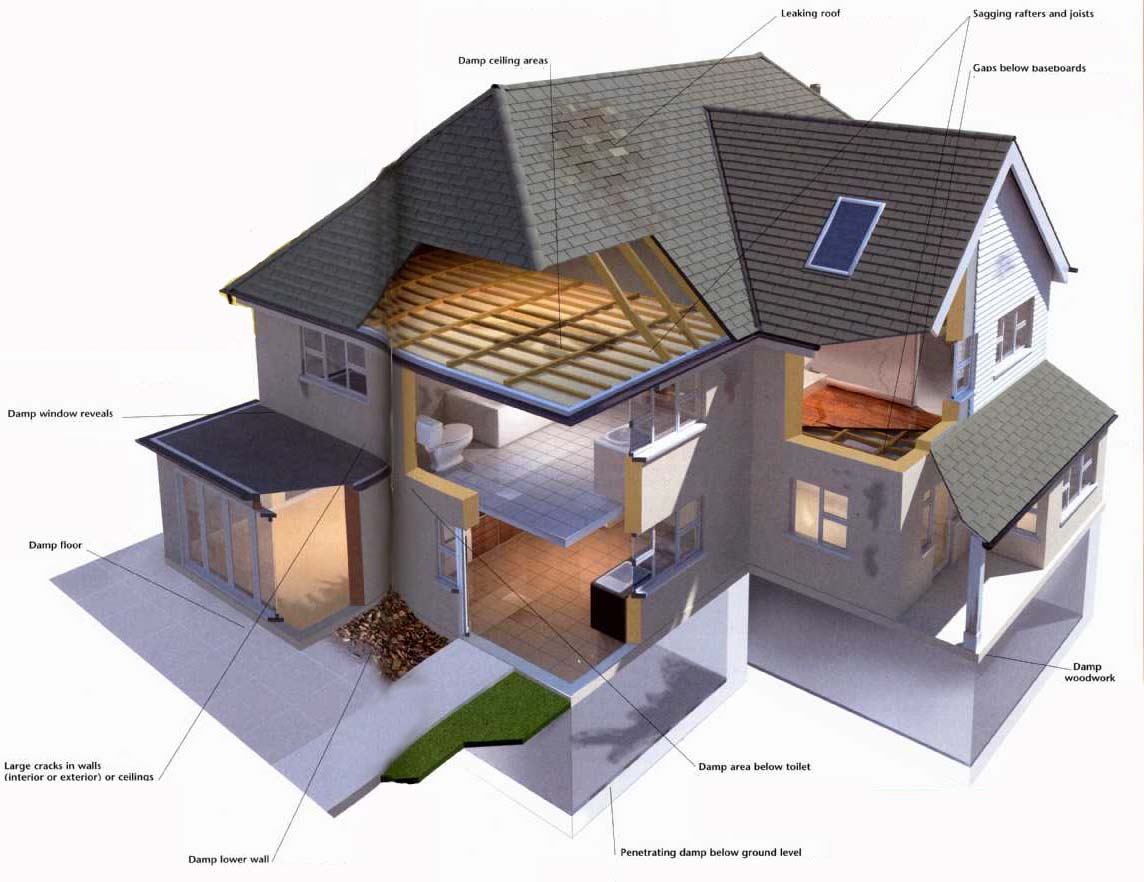To summarize, here are the most-critical structural
problems affecting
homes:
- Damp window reveals: May be caused by condensation, or
by penetrating damp due to poor seals at edges or flawed installation.
- Damp
floor: Generally a result of condensation, a damp
covering suggests that ventilation needs improving. If the structure
itself is damp, with visible patches on a concrete floor or wooden
floorboards, rising damp may be the cause.
- Large cracks in
walls: (interior or exterior) or ceilings: May
be due to settlement or subsidence, and therefore require investigation,
cracks are commonly found along wall-ceiling junctions. central
cracks may be due to poorly finished drywall. Cracks in old ceilings
may be caused by sagging joists, or the plaster itself beginning
to fall away from the ceiling structure.
-
Damp lower wall :
When soil or debris piles up against a wall, water retained
by the debris may gradually penetrate the wall surface and create
a water problem. More information on wet-basement
problems.
- Damp ceiling areas: Often caused by a leaking pipe or roof.
However, when the damp patch is close to an exterior wall, it could
be caused by penetrating damp, which may need investigating.
- Leaking roof: A sound roof is essential to structural
integrity of a house. Leaks can lead to various problems caused by
damp and rot.
- Gaps below baseboards: May be due to poor installation,
or may reveal failure of floor joists caused by rot or subsidence.
- Sagging rafters and joists: These may be due to age, or
weakening by insect infestation or rot that will require treatment.
- Damp area below toilet: The cold water in a toilet can
cause condensation and damp areas. Improved heating and ventilation
can remedy the problem.
- Penetrating damp below ground level:
Basements are areas where water is a common problem. Because it's below
the ground, some form of lining will be required. A musty smell,
patches over large wall areas, and flaking paint on wall surfaces
all tend to reveal the problem clearly. More information on wet-basement
problems.
- Damp woodwork: When present
on the exterior, this is usually due to poor maintenance. However,
poor design or incorrect installation of windows or doors can be
responsible.
|

